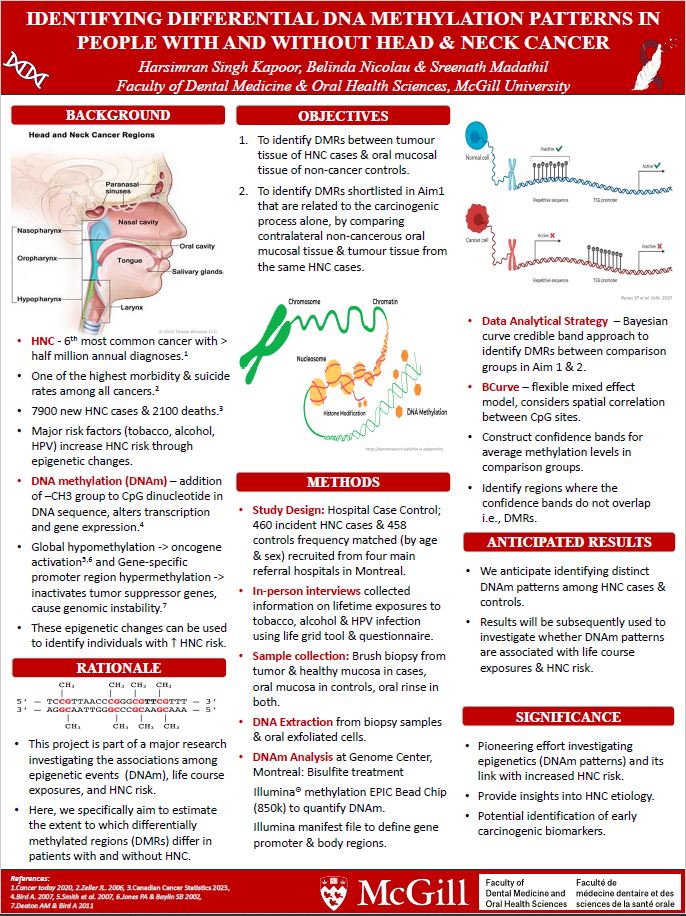Identifying Differential DNA Methylation Patterns in people with and without Head and Neck Cancer
Harsimran Singh Kapoor (MSc Dental Sciences – thesis: Year 1), Belinda Nicolau, Sreenath Madathil
Faculty of Dental Medicine and Oral Health Sciences, McGill University
Introduction: Head and neck cancer (HNC) is the sixth most prevalent cancer globally, with over half a million annual diagnoses. These cancers have a profound impact on individual quality of life, exhibiting one of the highest morbidity and suicide rates among all cancers. Major HNC risk factors (such as smoking, alcohol consumption, and human papillomavirus infection) across the individual’s life may increase HNC risk through epigenetic changes in somatic cells. One such mechanism is DNA methylation (DNAm), which involves the addition of methyl group to CpG dinucleotide in DNA sequence, causing alteration in transcription and gene expression. These epigenetic changes can be used to identify individuals at increased risk of HNC. This project is part of major research investigating the associations among epigenetic events (DNAm), life course exposures, and HNC
risk. In this study, we specifically aim to estimate the extent to which differentially methylated regions (DMRs) differ in patients with and without HNC.
Methods: The data for this project is derived from the HeNCe Life study, a hospital-based casecontrol study. Incident HNC cases (n=460) and frequency-matched controls (n=458), by age and sex, were recruited from four main referral hospitals in Montreal. In-person interviews collected detailed information on lifetime exposures to smoking, alcohol, and HPV infection using a life grid tool and a questionnaire. Brush biopsy samples were collected from tumour and oral mucosa in cases and oral mucosa in controls, along with oral rinses. The extracted DNA is currently undergoing analysis using bisulphite treatment and Illumina Methylation EPIC Bead Chip to quantify DNAm. The Bayesian curve credible bands approach will be employed to identify DMRs between tumour and oral mucosa among HNC cases and controls.
Anticipated Results: We anticipate identifying distinct DNAm patterns among HNC cases and controls. These results will be subsequently used to investigate whether DNAm patterns are associated with life-course exposures and HNC risk.
Conclusion: Our research represents a pioneering effort to investigate epigenetics (DNAm patterns) and its link with increased HNC risk. The final findings of this project will provide insights into HNC aetiology, generate hypotheses, and potentially identify early carcinogenic biomarkers.
